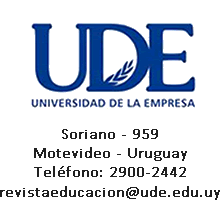Talking with Your Hands - Teacher Training
Keywords:
Libras, Surdo, Educação bilíngue, InclusãoAbstract
Libra (Brazilian Sign Language) is a young language and therefore, it can be said that it is in the process of construction, it was instituted by Law 10.436/2002. From then on, it was recognized as the mother tongue of the deaf community. In 2005, Decree 5626/2005 was published. which regulates the Pounds Act and deals with the inclusion of Pounds as a compulsory subject in undergraduate courses. As Libra is a mandatory discipline in teacher training courses, it is assumed that all teachers are fluent in the language, however, this is not the Brazilian reality, in which while there is a requirement for the discipline of Libras in teacher training courses, in particular the discipline is treated as a "less important" subject, with a lower workload, which does not allow for the acquisition of the language itself. Another factor to be taken into account for the realization of this project refers to Law 14191/2021, which amended the LDB including Chapter V, which deals with the bilingual education of deaf people, including in schools and regular classes. But, How will this bilingual education be carried out, given the low number of teachers who are fluent in the language? Especially in city centres.
Downloads
Additional Files
Published
How to Cite
Issue
Section
License
Copyright (c) 2023 Maria Helena Mena, Luciana Moraes

This work is licensed under a Creative Commons Attribution 4.0 International License.
Política para revistas de acceso abierto
Los autores/as que publiquen en esta revista aceptan las siguientes condiciones:
a. Los autores/as conservan los derechos de autor y ceden a la revista el derecho de la primera publicación, con el trabajo registrado con la licencia de atribución de Creative Commons (CC-BY), que permite a terceros utilizar lo publicado siempre que mencionen la autoría del trabajo y a la primera publicación en esta revista.
b. Los autores/as pueden realizar otros acuerdos contractuales independientes y adicionales para la distribución no exclusiva de la versión del artículo publicado en esta revista (p. ej., incluirlo en un repositorio institucional o publicarlo en un libro) siempre que indiquen claramente que el trabajo se publicó por primera vez en esta revista.






















